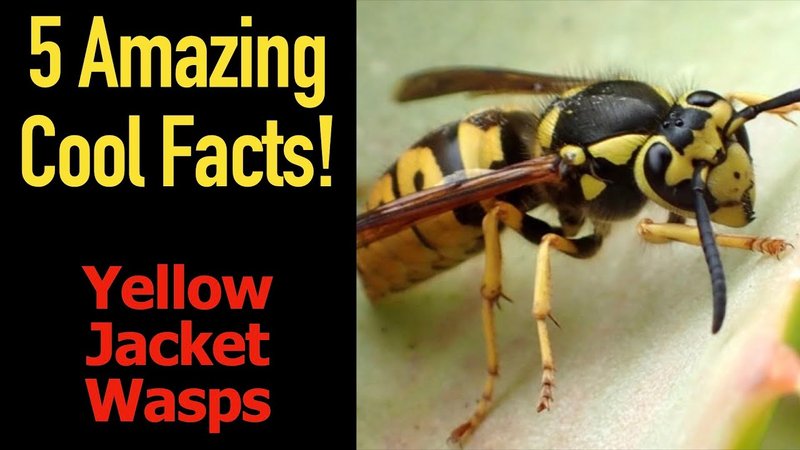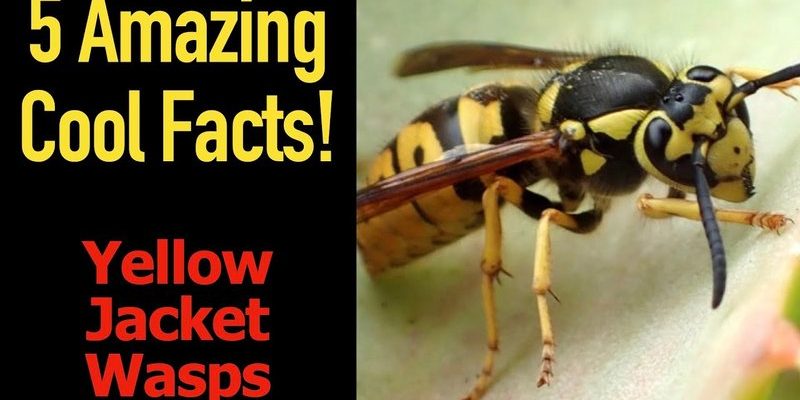
Yellowjackets are known for their distinctive black and yellow stripes, but there’s so much more to them than just their striking appearance. They are social insects, living in colonies that can reach impressive sizes—sometimes housing thousands of members. Picture a bustling little city where everyone is working together, but occasionally, they might give you a surprise sting if they feel threatened. Here are some captivating insights into the world of yellowjackets that will leave you both informed and perhaps a little more appreciative of these remarkable insects.
1. Yellowjackets Are Not Bees
You might think yellowjackets are just another type of bee, but here’s the thing: they are wasps. This can be confusing, especially since they often have similar features. While bees focus on collecting nectar and pollen, yellowjackets primarily hunt for protein to feed their larvae. Think of bees as gardeners, helping flowers grow, while yellowjackets act like nature’s pest control.
Yellowjackets play a vital role in controlling other insect populations. They feed on a variety of creepy-crawlies, such as caterpillars and flies. So, in a way, they help maintain a balance in the ecosystem. If you have a garden, those yellowjackets might be beneficial, even if they sometimes seem a bit too feisty.
2. They’re Social Creatures
Yellowjackets are known for their strong social behavior. They live in colonies, much like honeybees, with each one typically led by a queen. The queen is responsible for laying eggs, while worker yellowjackets perform various tasks, such as building nests, foraging for food, and protecting the colony. It’s a bit like running a busy household, where everyone has a specific job to do.
Their colonies can house anywhere from a few dozen to about 5,000 yellowjackets, depending on the species and the season. The population tends to peak in late summer, which is when you might notice them buzzing around more frequently—often leading to those unexpected encounters at picnics. When fall arrives, the colony’s members start to die off, leaving only the young queens to hibernate until spring.
3. A Nest Built for Survival
Have you ever come across a yellowjacket nest? They often build their homes in hidden places, like underground burrows, hollow trees, or tucked away in attics. Their nests are made from a paper-like material they create by chewing wood fibers mixed with their saliva. It’s fascinating to realize that these industrious insects are creating structures resembling tiny cities!
Yellowjacket nests can grow quite large, reaching up to three feet in diameter. The nests are usually organized into chambers where eggs are laid and larvae are raised. However, because these nests can be so close to human activity, they can become a nuisance. It’s essential to be cautious around them—an unexpected encounter can lead to a swarm if they feel threatened.
4. Yellowjackets and Their Aggressive Behavior
Here’s something you might find interesting: yellowjackets can be quite aggressive, especially when protecting their nests. Unlike bees, which can only sting once (and then die), yellowjackets can sting multiple times, making them a formidable opponent. Imagine a group of tiny, angry defenders ready to protect their home at all costs!
Their aggressive nature is heightened in late summer and fall when they’re preparing for the winter months. This is when they search for sugary foods, which can lead them to human gatherings. You might notice them buzzing around your drinks or snacks, not because they’re being rude, but because they’re trying to stock up on energy for the colder months ahead.
5. They’ve Got a Sweet Tooth
While yellowjackets primarily eat insects, they also have a penchant for sugar—especially when summer rolls around. It’s kind of funny to think about these fierce predators getting excited over a dropped soda can or a slice of pie. During late summer, their behavior shifts as they seek out sweet foods.
You can find yellowjackets hovering around picnics or outdoor gatherings, making them notorious party crashers. To keep them at bay, it helps to cover your food and drinks when you’re outside. They’re attracted to anything sweet, and even leftover barbecue sauce can send them into a frenzy.
6. Yellowjackets Are Excellent Predators
If you’ve ever watched a yellowjacket in action, you’ve seen a skilled hunter. They’re agile fliers, capable of chasing down prey with impressive speed. They help control pest populations by feeding on various insects, which can be advantageous for gardeners and farmers alike. Imagine them as tiny superheroes, fighting off the bad guys of the insect world!
Their predatory nature goes beyond just hunting insects. Yellowjackets also scavenge for food, and they’re known to steal from other insects’ nests. If you ever see a yellowjacket snatching up an unsuspecting fly, that’s just their survival instinct kicking in!
7. Their Lifespan and Life Cycle
Yellowjacket colonies have a unique life cycle that spans from spring to fall. In spring, a new queen emerges and finds a suitable location to start her nest. She lays eggs, and from those eggs, worker yellowjackets eventually hatch. The workers take over the foraging while the queen focuses on laying more eggs.
Interestingly, the lifespan of yellowjackets varies by caste. Worker yellowjackets typically live for a few weeks to a couple of months, while queens can survive all winter, hibernating until spring to start new colonies. This seasonal cycle is essential for their survival and helps ensure the population continues to thrive.
8. They Can Be Beneficial
While yellowjackets have a reputation for being pests, they’re also beneficial for the environment. Their role as predators helps control other insect populations. Without them, certain pests could overpopulate, leading to crop damage and other problems in our ecosystems.
If you think about it, yellowjackets are doing us a favor by managing these pesky critters, even if they come with a side of annoyance. Having them around means we have a healthier balance in nature, making it easier for plants and crops to flourish.
9. Unique Variations of Yellowjackets
There are several species of yellowjackets, each with its unique traits. For example, the Eastern yellowjacket and the Western yellowjacket are common in North America but have slightly different habits and nesting preferences. Their habitats can also vary, from urban areas to forests.
This diversity means that while all yellowjackets share some common characteristics, they can behave differently based on their environment and species. It’s fascinating to realize just how varied these little creatures can be!
10. Yellowjackets and Human Interaction
Lastly, it’s essential to understand how to coexist with yellowjackets. While they can be a nuisance, they usually only sting when they feel threatened. If you can avoid startling them, they typically won’t bother you. Here are a few tips to help manage your interactions:
- Keep food covered during outdoor events.
- Stay calm and move away slowly if one comes close.
- Avoid swatting at them, as this could provoke a sting.
Understanding their behavior can help keep you safe while allowing these insects to do their part in the ecosystem.
By knowing these facts about yellowjackets, hopefully, you’ll see them in a new light. They are more than just pesky intruders at your summer parties; they play crucial roles in our environment. So, the next time you encounter one of these buzzing creatures, you might just appreciate them a little more. After all, every insect has its story to tell!

